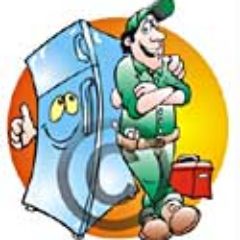Seattle Appliance Repair works on all brands and models of washers such as Kenmore, Whirlpool, Maytag, GE, LG, Admial and many more. View the full list:
If your washer leak, doesn’t spin or you have any other issues with it, simply call our toll free number and we will take care of your problem. We are available 24/7 for your Seattle washer repair at:
800 465 0697
For parts only: 800-370-9281
Please note that all purchased washer parts are shipped directly to you.
Our washer repair area includes all of Seattle and the surrounding cities that are listed below:
| Burien Capitol Hill Cascade Clearview Clyde Hill Coal Creek | Lake Forest Park Lake Stevens Larimers Corner Lowell Lynnwood | Seattle Seattle Heights Shoreline Shorewood view the rest service areas |
The information below is designed to provide how to increase the life of your washer and use it in the most efficient way, so that will save you money form utility bills and future Seattle washer repairs. It is posted with the understanding that we are not offering advice that you do washer repairs on your own. If Seattle washer expert assistance is required, the services of competent Seattle professionals are available 24/7 at our toll free phone number.
800 465 0697
WASHER OPERATIONAL GUIDE
Washer features that operate without dials or buttons to turn them on are as follows.
Dispensing Systems. Three types of built-in dispensing features can save you trips to the washer by adding washing aids at the appropriate time.
1. The automatic bleach dispenser dilutes bleach before adding it to the wash water to avoid damage to fabrics.
2. The automatic fabric softener dispenser adds softener during the washer final deep rinse because most fabric softeners are not compatible with detergents.
3. The automatic detergent dispenser adds detergent after an automatic pre-soak or pre-wash when the washer cycles into the regular wash sequence. It is usually designed for liquid detergent.
Lint-Removal Systems. Most washers have some system for lint removal, either around the top of the agitator or in the water- recirculation system.’ The first type requires cleaning; the second is usually self-cleaning and is effective at any water level. Washer linting problems often result from improper sorting of wash loads or from machine overloading. No lint-removal system will compensate for these faults.
Off-Balance Systems. All automatic washers have systems to protect the washer from imbalance during the spin cycle. On the inside, the washer washtub is hung on some type of suspension spring to allow washer to adjust to various spin loads. If the washer load becomes seriously off balance and the tub wobbles too violently, some washers will turn off. Other washers will continue to spin but at such a reduced rate that water may remain in the clothes. You can help maintain balance by evenly distributing the wash when you load the washer. On the outside, the washer bottom should be completely level. To accommodate the washer to slight variations in floor levels, most washers have four leveling legs. Each leg can be slightly raised or lowered. Leveling is usually done at the time of installation. However, if your washer is consistently spinning off balance, see if the washer is no longer level. See manufacturer’s washer instructions for readjusting the legs.
Lights. An interior wash basket light that goes on whenever the lid or door is opened is a convenience on some deluxe models. Washers also may have panel and indicator lights.
NON-AUTOMATIC WASHERS
Non-automatic washers, depending on how water is extracted from wash, are either spinners or wringers.
Spinners. Wash is put into the spinner tub and water is extracted by high-speed spinning that forces the wash to the sides of the basket and squeezes out the water. This is the same method that is used in the automatic washer.
Wringers. Wash is fed through two rotating rollers, called wringers, attached to the top of the washtub frame. The rollers squeeze out the water, and the drain board underneath the rollers channels the water back into the washtub. A tub of clear water is usually placed on the other side of the wringer to catch the clothes aml provide a rinse.
With spinners and wringers, handling the wash may be a problem if you have used extremely hot wash water. If you use a spinner, you can lift the wash out of the washtub and into the spinner with a wooden paddle. If you use a wringer washer and have to handle each piece of wash individually, you can use rubber gloves to help protect your hands.
CONTROLS AND ACTION
If you buy a non-automatic washer, instead of setting controls for such things as water fill, water temperature, or rinsing, you will have to handle these chores yourself. Because non-automatics make more demands on you and your time, they are usually bought only when they fit a particular preference or need. For example, a non-automatic may be the answer when space is limited or when permanent washer installation is not practical—as in a mobile home, in a vacation home, or in a small apartment. If you are going to buy a non-automatic, you may wish to buy one with as many automatic controls and features as you can for ease of operation. But the more controls and features, the higher the price. Non-automatics with many controls can be more expensive than automatics with few controls. Built-in features are usually minimal. Some models have lint filters. Some have signals, such as a light showing whether the washer is plugged in or a bell alerting you that the washer has finished agitation or is off balance.
Water Fill/Water Temperature. You control the water level and temperature on a non-automatic washer by turning faucets. Some models have waterline indicators in the tub. Always see that the water covers the wash load.
If expert assistance is required, the services of competent professionals are available 24/7 at our toll free phone number.
